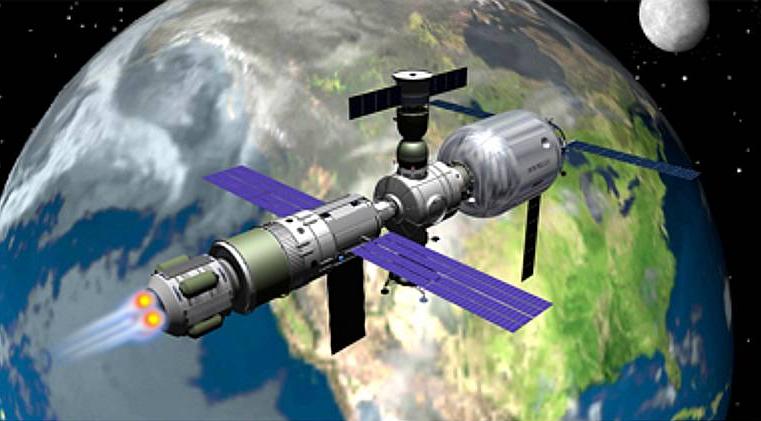D
DarkenedOne
Guest
Well Constellation is probably going to be cancel long before it is implemented, which is no surprise consider the project is underfunded, over-budget by 3 billion, behind schedule, and encountering unexpected technical problems. Of course the main reason is simple it simply costs too much.
Personally I have come to the same conclusion that prolong and sustainable exploration beyond LEO will require new short and intermediate technology, so I started this thread to talk about these technologies. Please
1. ISRU - In-site Resource Utilization
I cannot tell you how important I feel this technology is to all future exploration efforts. Space exploration requires immense amounts of material, particularly the consumables such as fuel, water, and oxygen. Shipping these materials from earth these materials is going to be prohibitively expensive, and I do not see that changing dramatically in the next few decades. There have been a number of devices and methods that have been developed over years. Mars direct for example proposes generating rocket fuel from the Mars atmosphere for the return trip. For the moon we have been working on generating oxygen from the oxygen rich lunar soil. There is also the recent discovery of water on the lunar surface that can also be utilized. The problem with ISRU at the moment is that while the lab experiment have yielded positive results the technology has yet to be field tested, which is necessary if astronauts lives are going to depend on it. Fortunately this can be done in the form of robotic demonstration missions. In the case of Mars Direct their proposal is to send an unmanned spacecraft to Mars to gather all the fuel from the atmosphere before humans even show up.
2. Closed Life support systems
Clearly the simple benefit of this would be to reduce the amount of consumables needed for these missions. We already have a water recovery system on board the ISS that is able to recover over 90% of the water that is wasted. Air however is still not fully recovered in a closed system at the moment aboard the ISS. According to NASA they are working on a air revitalization system that will be able to save 2000lbs per year in resupply for the ISS. At the cost of shipping to the ISS that amounts to tens of millions of dollars saved. At the cost of shipping to the moon or mars that ends of being at least a billion saved yearly I believe. The effect of this would be that space craft would be smaller, faster, and hence cheaper. Bases on the Moon or Mars would be more self-sustaining and require less resupply.
3. Advanced propulsion
Propulsions importance to space exploration is obvious. There are a number of propulsion technologies such as Ad Astro's plasma rocket, solar-electric ion propulsion, nuclear reactors, etc that promise to get us around faster and cheaper. Unfortunately NASA is still using the same type of rockets that got us into space 50 years ago. If we want to push the bounds in the final frontier than we will have to push this technology as well.
3. Reusable/refuelable space ships
We have all heard of reusable launch vehicles and their importance to decreasing cost of access to space. Well reusable space ships are probably even more important for going to places like Mars. The current Constellation archectiture calls for only two reusable elements, the Orion capsule and the solid rocket booster. Everything else including the Altair lander, the Earth Departure Stage, the Orion service module are all thrown away after every mission. The fact of the matter is that while this may be acceptable for the 3 day trip to the Moon, places like Mars are going to be different. You will need space craft that is capable of sustaining human life for years. Such a sophisticated and advance craft would simply be to costly to build for every mission especially if we are to build a base. What we need is a genuine space ship. One that will stay in space in orbit when not in use. One that can be refueled and resupplied by cargo craft. Truth is we already have developed a great deal of this technology for the ISS.
These are just a few that I believe are really important, and if I were in charge this is where I would put my money. Please comment and add a few you think are important
Personally I have come to the same conclusion that prolong and sustainable exploration beyond LEO will require new short and intermediate technology, so I started this thread to talk about these technologies. Please
1. ISRU - In-site Resource Utilization
I cannot tell you how important I feel this technology is to all future exploration efforts. Space exploration requires immense amounts of material, particularly the consumables such as fuel, water, and oxygen. Shipping these materials from earth these materials is going to be prohibitively expensive, and I do not see that changing dramatically in the next few decades. There have been a number of devices and methods that have been developed over years. Mars direct for example proposes generating rocket fuel from the Mars atmosphere for the return trip. For the moon we have been working on generating oxygen from the oxygen rich lunar soil. There is also the recent discovery of water on the lunar surface that can also be utilized. The problem with ISRU at the moment is that while the lab experiment have yielded positive results the technology has yet to be field tested, which is necessary if astronauts lives are going to depend on it. Fortunately this can be done in the form of robotic demonstration missions. In the case of Mars Direct their proposal is to send an unmanned spacecraft to Mars to gather all the fuel from the atmosphere before humans even show up.
2. Closed Life support systems
Clearly the simple benefit of this would be to reduce the amount of consumables needed for these missions. We already have a water recovery system on board the ISS that is able to recover over 90% of the water that is wasted. Air however is still not fully recovered in a closed system at the moment aboard the ISS. According to NASA they are working on a air revitalization system that will be able to save 2000lbs per year in resupply for the ISS. At the cost of shipping to the ISS that amounts to tens of millions of dollars saved. At the cost of shipping to the moon or mars that ends of being at least a billion saved yearly I believe. The effect of this would be that space craft would be smaller, faster, and hence cheaper. Bases on the Moon or Mars would be more self-sustaining and require less resupply.
3. Advanced propulsion
Propulsions importance to space exploration is obvious. There are a number of propulsion technologies such as Ad Astro's plasma rocket, solar-electric ion propulsion, nuclear reactors, etc that promise to get us around faster and cheaper. Unfortunately NASA is still using the same type of rockets that got us into space 50 years ago. If we want to push the bounds in the final frontier than we will have to push this technology as well.
3. Reusable/refuelable space ships
We have all heard of reusable launch vehicles and their importance to decreasing cost of access to space. Well reusable space ships are probably even more important for going to places like Mars. The current Constellation archectiture calls for only two reusable elements, the Orion capsule and the solid rocket booster. Everything else including the Altair lander, the Earth Departure Stage, the Orion service module are all thrown away after every mission. The fact of the matter is that while this may be acceptable for the 3 day trip to the Moon, places like Mars are going to be different. You will need space craft that is capable of sustaining human life for years. Such a sophisticated and advance craft would simply be to costly to build for every mission especially if we are to build a base. What we need is a genuine space ship. One that will stay in space in orbit when not in use. One that can be refueled and resupplied by cargo craft. Truth is we already have developed a great deal of this technology for the ISS.
These are just a few that I believe are really important, and if I were in charge this is where I would put my money. Please comment and add a few you think are important









